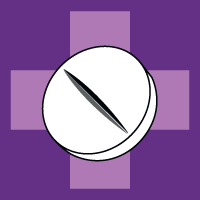Topic Editors


Optimization of Drug Utilization and Medication Adherence
Topic Information
Dear Colleagues,
This Topic focuses on optimizing medicine use and adherence to provide a comprehensive overview of current trends and future directions in drug utilization research. Recognizing that medication-taking behavior is highly complex and individualized, this issue emphasizes the need for multifactorial strategies to enhance medication adherence and evidence of methods to analyze it. Hence, we invite original research articles, reviews, and case studies addressing strategies to improve medication adherence, evaluating the economic impact of non-adherence, and developing innovative approaches to optimize drug utilization. Studies examining strategies to analyze and report medication adherence data as well as the role of healthcare providers, patient education, and technology use in promoting adherence are also welcome. Both quantitative and qualitative (and mixed) methods will be considered. Given that medication adherence is particularly crucial for chronic conditions, we encourage contributions exploring challenges and solutions in chronic disease management and the effectiveness of intervention programs.
Prof. Dr. Enrica Menditto
Dr. Sara Mucherino
Dr. Ignacio Aznar-Lou
Topic Editors
Keywords
- drug utilization
- medication adherence
- chronic disease management
- pharmacoeconomics
- healthcare outcomes
- patient safety
- intervention programs
- real-world data
Participating Journals
| Journal Name | Impact Factor | CiteScore | Launched Year | First Decision (median) | APC | |
|---|---|---|---|---|---|---|

Journal of Clinical Medicine
|
3.0 | 5.7 | 2012 | 16 Days | CHF 2600 | Submit |

Pharmaceuticals
|
4.3 | 6.1 | 2004 | 13.9 Days | CHF 2900 | Submit |

Pharmaceutics
|
4.9 | 7.9 | 2009 | 15.5 Days | CHF 2900 | Submit |

Pharmacy
|
2.0 | - | 2013 | 24.6 Days | CHF 1800 | Submit |

Healthcare
|
2.4 | 3.5 | 2013 | 20.3 Days | CHF 2700 | Submit |

MDPI Topics is cooperating with Preprints.org and has built a direct connection between MDPI journals and Preprints.org. Authors are encouraged to enjoy the benefits by posting a preprint at Preprints.org prior to publication:
- Immediately share your ideas ahead of publication and establish your research priority;
- Protect your idea from being stolen with this time-stamped preprint article;
- Enhance the exposure and impact of your research;
- Receive feedback from your peers in advance;
- Have it indexed in Web of Science (Preprint Citation Index), Google Scholar, Crossref, SHARE, PrePubMed, Scilit and Europe PMC.


